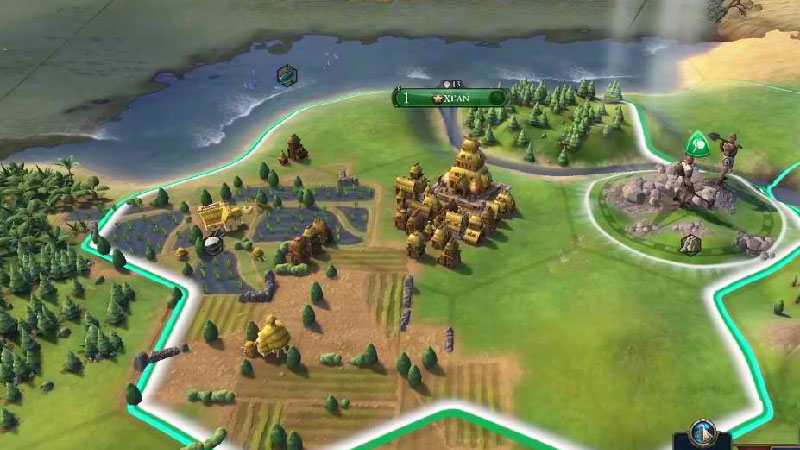

Each District will occupy an entire plot, which you won't be able to use for anything else! In the early stages of developing a city there will be very few choices for district placement (since by necessity these are limited due to the limited number of tiles the city controls) but if the city has good Culture output its borders will grow quickly, adding more choices.įinally, for Specialty districts you will need to increase the city's Population first. Since Districts are built outside the City Center, you will need a suitable plot of land within city borders. Most Districts are unlocked within the first two - three game Eras, but the Spaceport is only unlocked in the Atomic Era, so you should plan accordingly. In order to build any District, you must first unlock it by making the necessary technological or civic advancements. Check individual articles for specifics.ĭistricts are built via the normal production process of the city - just look in the Production list. Also, in Gathering Storm, the construction of these districts can be rushed by Military Engineers.ĭifferent districts are unlocked over time via technical or civic development.

There are also the so-called 'engineering' districts (like the Aqueduct, the Neighborhood or the Dam in Gathering Storm), which are exceptional - despite being built outside of the City Center they are considered an integral part of the city systems, and may be built in any city where the necessary prerequisites are met, regardless of Population and how many other Districts it has. All Specialty districts also have a project attached to them: these projects are undertaken from the city production queue, and upon completion award a set amount of yields and Great Person points (depending on the district), and may be done as many times as desired. Specialty districts confer a number of other bonuses to their city (for example, additional Combat Strength) and determine its eligibility for many Policies' bonuses. They are subject to population constraints, meaning that the current Population of the city will determine the maximum number of Specialty districts which it may construct. Most Districts are " Specialty Districts" that is, they fulfill a specific gameplay role, not technically related to the city's basic functioning. Once you've built a Harbor district, you will be able to build ships there, even though your city center is away from the shore. Similarly, once you've built an Encampment district, your military units will start appearing there, instead of in the City center (reinforcing the notion that troops are now trained in the special facilities there). City Buildings which were before implicitly related to different gameplay aspects, are now explicitly allocated to the respective city district, are unlocked only after building that district, and will physically reside there, Your Library and University, for example, will appear in your Campus district (the Science-oriented part of the city), not in the main city. Once built, districts will confer stat yields, bonuses and unlock new possibilities for their parent city.

This part is now known as the City center. It is nevertheless still the most important part of a city, which an attacker needs to conquer in order to take the whole city. The main city tile, where a city is originally found, still remains the focus of city life and power, but only hosts several essential buildings, such as the Granary and city walls. Civilization VI separates these parts from the City Center, giving them autonomy and making them at the same time more powerful and more vulnerable to enemy attacks. Think of it as a visual manifestation of the implied parts of a city in other Civilization games: a military part, a scientific part, a cultural part, etc. the city's main tile), and which focuses on developing some gameplay aspect in this city. A district is a distinct part of a city which is found on terrain outside the city center (i.e.


 0 kommentar(er)
0 kommentar(er)
